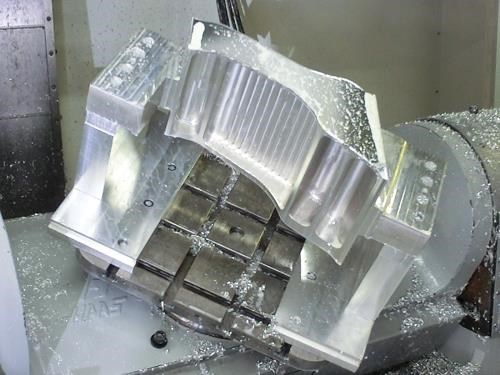Clamping Options for Five-Axis Machining
In five-axis machining, the workholding has to get out of the way. The wrong choice of clamping risks collision and can obscure one of the principal benefits of a five-axis machine.
Share





In five-axis machining, the workholding has to get out of the way. This is one of the challenges. Particularly on trunnion-style machines that pivot the part instead of the tool, the wrong choice of clamping or fixturing risks collisions as the part rotates through compound angles. Meanwhile, one of the promises of five-axis machining is the ability to cut various faces of the part in a single setup. That benefit is compromised if the workholding device—say, a standard vise—covers up the surfaces of the part.
For shops rethinking their workholding for five-axis machining, Haas Automation posted this useful article detailing various fixturing options engineered specifically for five-axis machining.
One other approach, seen in the accompanying photo, is to make the workpiece itself the fixture by clamping the billet and machining the part out of it. This photo was taken at Padgett Machine. Read about Padgett’s experience with five-axis machining here.
Related Content
-
High RPM Spindles: 5 Advantages for 5-axis CNC Machines
Explore five crucial ways equipping 5-axis CNC machines with Air Turbine Spindles® can achieve the speeds necessary to overcome manufacturing challenges.
-
Additive/Subtractive Hybrid CNC Machine Tools Continue to Make Gains (Includes Video)
The hybrid machine tool is an idea that continues to advance. Two important developments of recent years expand the possibilities for this platform.
-
6 Machine Shop Essentials to Stay Competitive
If you want to streamline production and be competitive in the industry, you will need far more than a standard three-axis CNC mill or two-axis CNC lathe and a few measuring tools.






















.jpg;maxWidth=970;quality=90)